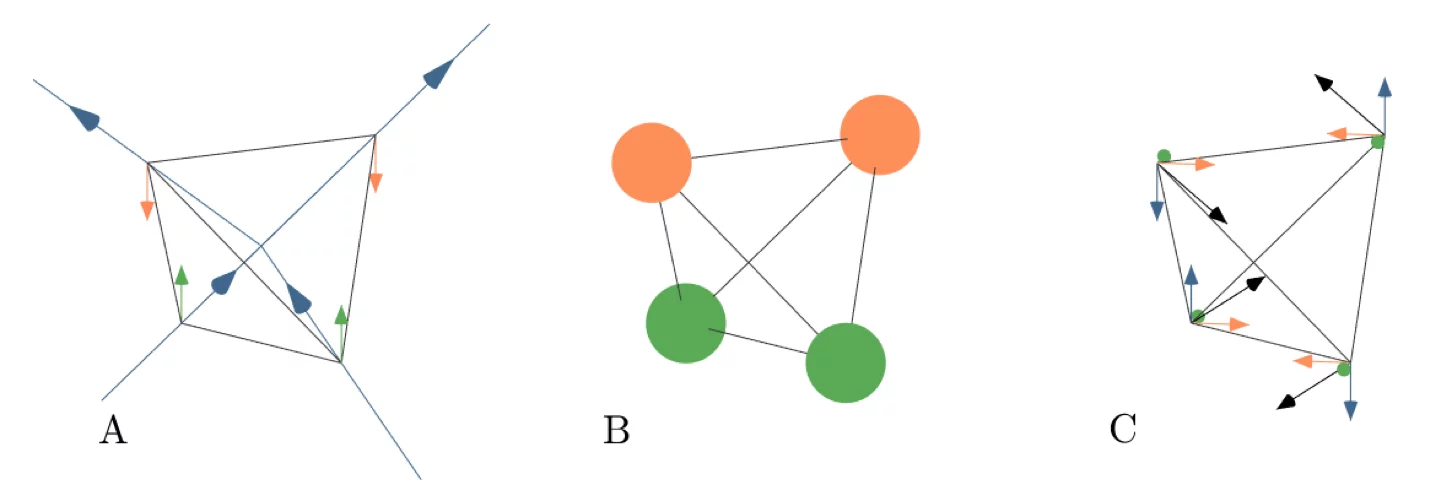Crystalline materials are typically thought of as highly ordered, and the long-range periodicity of structure and interactions leads to many of their useful and interesting properties. However, incorporating disorder into crystalline materials may also lead to new properties of fundamental or functional interest. Moreover, different types of disorder may be envisioned, with the commonest type – random disorder – typically leading to glassy or freezing behaviors, as in spin glasses.
In the situation that the crystal structure contains degrees of freedom that can be constrained by a local rule, and yet not uniquely specified, correlated disorder may occur. In our case, the crystal structure of certain ionic materials contains a highly correlated form of structural disorder that can be constructed using an ice rule, so called because of a mapping to a similar constraint in the hydrogen-bonding network of water ice. When two types of cation jointly occupy the pyrochlore lattice, the lowest energy configuration should have two of each type of cation on each tetrahedron, and applying this rule leads to a manifold of states in which the condition is satisfied throughout the structure. The degeneracy of the ice rule ensures both that the cations are not ordered, but also that they are not randomly disordered, in fact their correlations decay as a power-law.
This system is known as a charge ice, and has analogies in hydrogen-bonded networks (water ice) and frustrated magnetism (spin ice). It has been proposed that such crystalline materials incorporating highly correlated disorder would form a generically different type of material – aspects of crystalline and glassy materials are incorporated – that may have exciting new functionalities. The key signature of all these highly correlated structural and magnetic states, which are all types of Coulomb phase since they have the same underlying correlation function that can be represented by a non-divergent lattice vector field, is a specific structure observed by diffuse neutron scattering and known as a pinch point.
We particularly study the case of CsNiCrF6, in which a pyrochlore lattice of Ni2+ and Cr3+ is thought to form a charge ice, but these ions also carry magnetic moments that interact antiferromagnetically. Despite the complete destruction of the degeneracies of the highly frustrated Heisenberg antiferromagnet on the pyrochlore lattice by the correlated disorder, the spin system itself remains in a correlated and fluctuating state (i.e. a spin liquid of some type) down to the lowest temperatures measured. We are interested in the interplay of structural and magnetic correlations, and the role of the former in stabilizing the latter.
Publication
-
Fennell T, Harris MJ, Calder S, Ruminy M, Boehm M, Steffens P, et al.
Multiple Coulomb phase in the fluoride pyrochlore CsNiCrF6
Nature Physics. 2019; 15(1): 60-66. https://doi.org/10.1038/s41567-018-0309-3
DORA PSI
Collaboration
- Dr. Peter Derlet, CMT PSI
- Dr. Steve Bramwell, UCL, London, UK
- Dr. Mark Harris, Edinburgh, UK
Funding
- SNSF Project No. 200020_182536
Associated junior researchers
- Amirreza Hemmatzade, PhD LNS
- Dr. Karim Essafi, Post-doc CMT PSI
